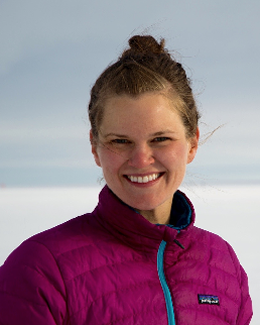Research Catalyst Grantee

S. McKenzie Skiles
Utah Valley University
Project Title
Constraining physical controls on snow hydrology along the Wasatch Front
Abstract
Like much of the Western US, the Wasatch Front depends on snowmelt to meet water demands, and a persistent reduction in the mountain snowpack would introduce stress into the current water delivery system. Impacts to snow water storage during accumulation are mainly due to increasing temperatures; more precipitation falls as rain instead of snow. Impacts to storage during ablation are mainly due to increasing net solar radiation, controlled by albedo, which drives snowmelt in almost all snow covered environments. Combined, a shallower, warmer snowpack has a lower albedo, which shifts snowmelt timing and magnitude, and further reduces water yields via increased evapotranspiration. Deposition of light absorbing aerosols, which accumulate in the snowpack through the winter and concentrate at the surface as snow melts, further compounds albedo decay. The Wasatch snowpack is at risk for deposition of both black carbon, particularly in the winter during persistent cold air pools (inversions), and dust, particularly in the spring when regional wind speeds and dust emission peak.
Despite this understanding of snow energy balance, snow modeling approaches have been empirically dependent on temperature alone due to the relative abundance of temperature measurements, the lack of measurements of other energy fluxes, and the loose positive relationship between melt and temperature. The assumption that snowmelt is controlled by temperature is increasingly invalid, and calibrated temperature/snowmelt relationships will lose utility under altered energy balance regimes, be it due to climate warming and/or to other forcings such as aerosol deposition. Understanding the physical controls on variation in snowmelt runoff is key to improved simulation and forecasting, and for more accurate projection of the changes in water resources under a changing climate.
Collaborators
Janice Brahney, Utah State University
Greg Carling, Brigham Young University
Jim Steenburgh, University of Utah


